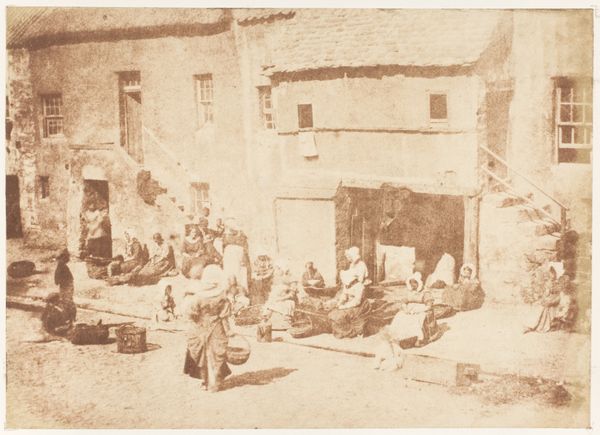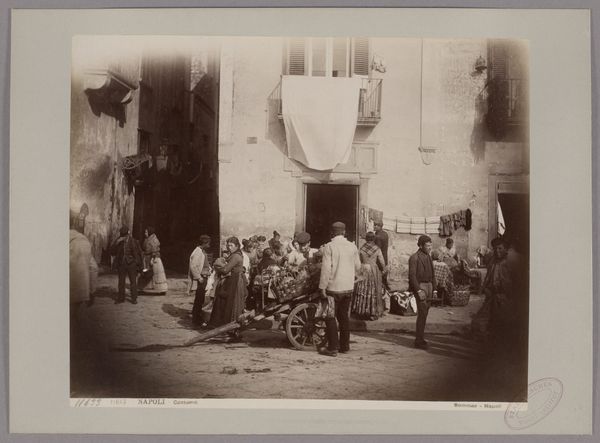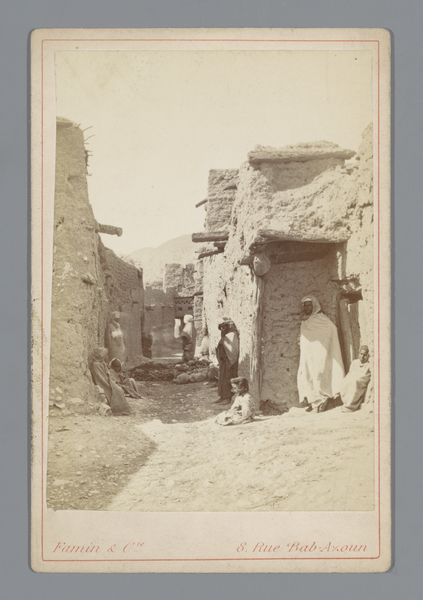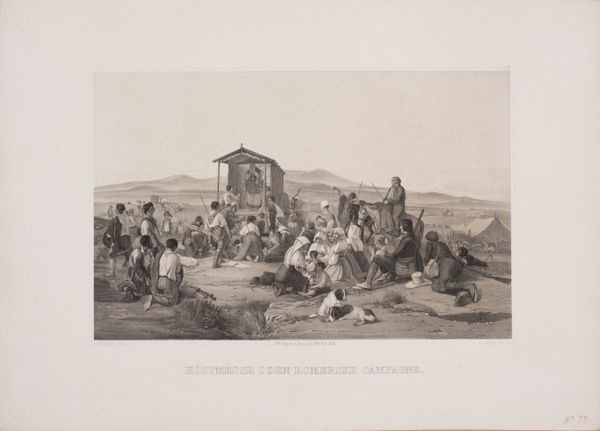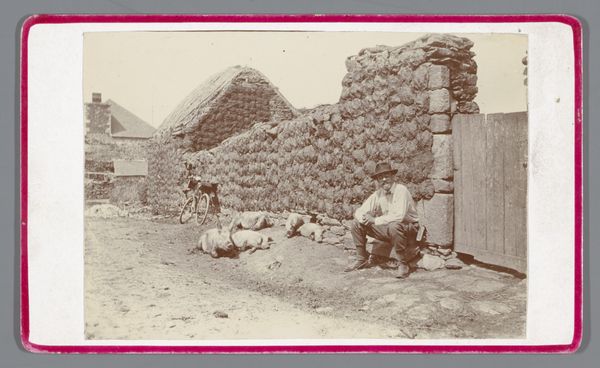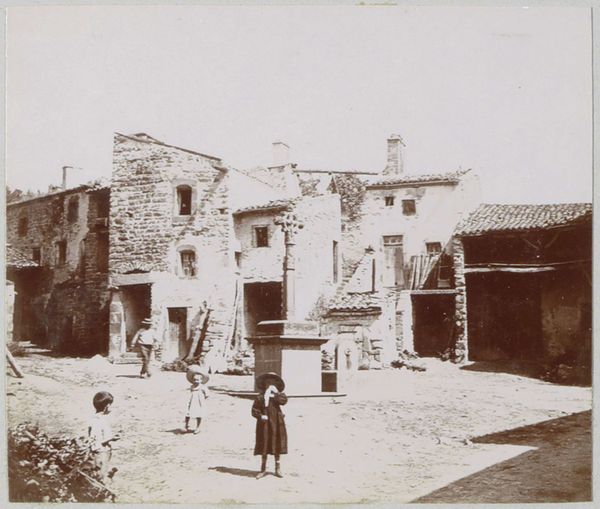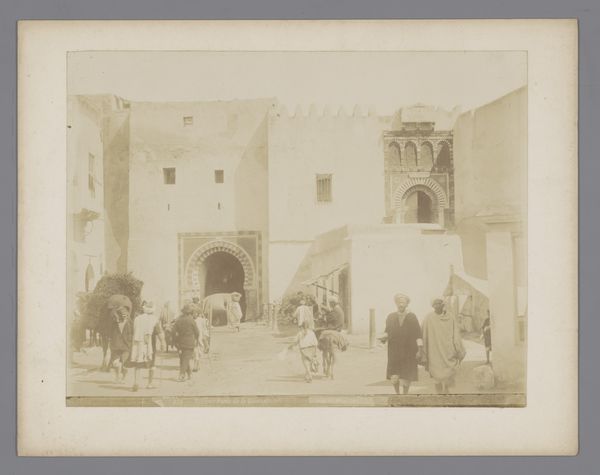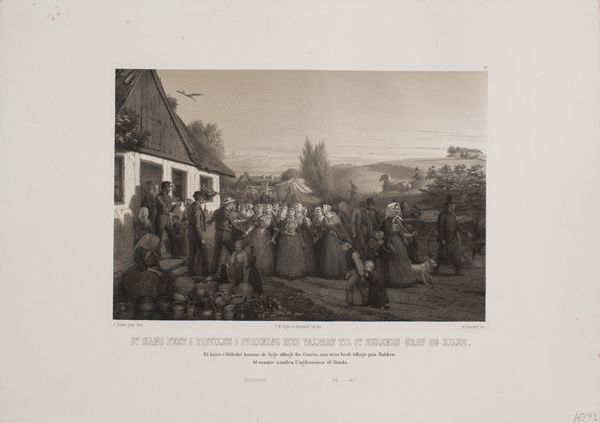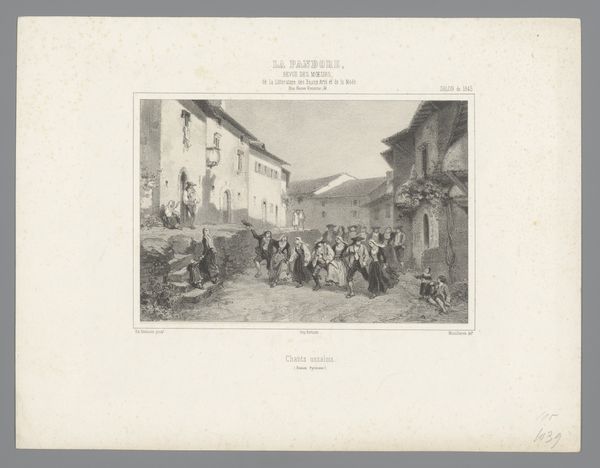
photography
#
portrait
#
photography
#
historical fashion
#
orientalism
#
islamic-art
#
genre-painting
Dimensions: height 108 mm, width 164 mm
Copyright: Rijks Museum: Open Domain
Curator: Here we have "Gevel van café in Algiers met mensen in traditionele kledij" (Façade of a Café in Algiers with People in Traditional Clothing), a photograph by Famin et Cie., dating roughly between 1863 and 1889. Editor: What immediately strikes me is how communal this scene feels, yet also incredibly posed. Everyone's turned towards the camera, aware of being watched, documented even, while the building feels more authentically, organically grown. Curator: It’s an interesting juxtaposition, isn't it? The architecture, that crumbling, seemingly ancient café, stands in stark contrast to the clearly arranged group of people in traditional dress. Consider the technical challenges, though; long exposure times would have demanded stillness, a form of controlled labor to achieve this image. We must also note the social context: Famin et Cie, like many photographers of the period, were commercial studios producing images often for a Western audience, capitalizing on Orientalist tropes. Editor: Precisely. And the framing supports that, doesn’t it? There’s an almost theatrical staging to their presence. The light creates very interesting forms that feel posed and purposeful, which lends to the idea of creating this imagined, exotic reality that was in high demand from their European buyers at this time. How do you see that play between documenting reality and crafting a consumable fantasy shaping this work? Curator: The question of intention and audience is critical. The materials, primarily photographic chemicals and paper, had a tangible cost, determining who could create and disseminate such images. These materials weren’t simply neutral tools; they shaped the possibilities for visual storytelling. Moreover, consider the clothing and setting carefully chosen to align with Western expectations and preconceived notions. Editor: And it raises concerns about representation. To what extent did the people featured have agency in their portrayal? Were they complicit, resisting, or merely resigned to being captured in this way? Also the impact it had, historically, of constructing this view, which then gets imposed onto other people living these lives at that time and beyond, even. Curator: I agree, the power dynamics inherent in this exchange need thorough investigation, even if solid proof may be difficult to come by, given the image's history. Editor: It's such a great reminder of the social, financial, and industrial relations that influenced every aspect of image making and even image taking and viewing. I keep asking myself, how did it change the ways the photographed persons viewed their very culture? Curator: Food for thought, indeed, especially considering the global circulation of these photographs and their continued influence on shaping perceptions even now. It prompts one to always examine photography not as objective but the means and intention, as it's indeed just one human's view of culture through their eyes.
Comments
No comments
Be the first to comment and join the conversation on the ultimate creative platform.
